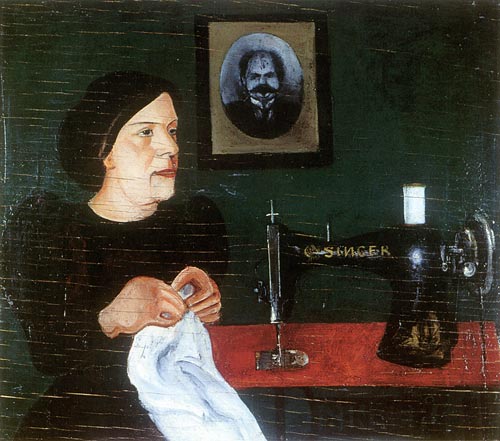Soviet artist Samuil Yakovlevich Adlivankin 1897-1966
Soviet artist Samuil Yakovlevich Adlivankin
Painter, monumentalist, graphic artist, was part of the “left” wing of Soviet art of 1920-30. He worked with a poster, painted portraits, genre paintings and landscapes. Stylistics of works is close to lubok, primitive, the spirit of AM Rodchenko, and LS Popova. Besides, he did easel works in the grotesque style. However, most valuable are the works created mainly until 1925.
Samuel Adlivankin is a typical representative of a generation who entered art together with the revolutionary upheavals of 1917. The pupils of VKHUTEMAS, these artists tried to get involved in the elements of the picturesque searches of the previous time. And, at the same time, greedily took on the signs of the new Soviet reality.
In the early 1920s, Adlivankin created a series of works, mostly portraits, admiring the typical character of his models and at the same time showing them ironically.
Artist Samuil Yakovlevich Adlivankin (1897-1966) is known as a painter, graphic artist, illustrator, poster artist, film artist, monumentalist. After graduating from the Odessa School under K. Kostandi, in 1918 he came to Moscow and studied at Tatlin in the Free State Art Studios. Already in 1919 – early 1920 Samuel Yakovlevich went to organize art workshops in Samara as an Authorized Higher State Artistic and Technical Workshop. From the memoirs of Adlivankin, 1 it is known that from 1923 to 1925 he cooperated with Mayakovsky. During this period, he draws labels for the Tea Management and draws up two books of Mayakovsky’s poems: “A story about how Fadey learned about the law protecting working people” (1924) and “Weaver and Spinner! It’s time for us to stop believing foreign sheep! “(1924) 2. Working together with the poet becomes a real school for improving graphic skills for Adlivankin. From 1925 to 1928, Samuel Yakovlevich actively draws cartoons for newspapers and magazines, creates book illustrations, preferring to paint various types of graphics.
Born on July 7 (19) 1897 in the town of Tatarsk in the Mogilev Province, Samuel Yakovlevich Adlivankin studied at the Odessa Art College (1912-1917). In 1918 he moved to Moscow and entered the Higher Art and Technical Studios, where he studied in the workshop of VE Tatlin (1918-1919).
After graduation, in 1919-1921 he lived in Samara, and was the head of the art section of the Provincial Committee for Mass Culture. But in 1921 he left Samara for Moscow, and at first taught art in a secondary school, and in a children’s colony. He collaborated with the publishing house Young Guard, illustrated magazines Lapot, Military Crocodile, Bezbozhnik (atheist), painted political posters and caricatures, worked at film studios. In 1938-1939 he executed paintings for the pavilion “Far Eastern edge” for All Union Agricultural exhibition.
Soviet artist Samuil Yakovlevich Adlivankin

1922. Portrait of a woman. Samara art museum
According to the memoirs of Adlivankin, from 1923 to 1925 he cooperated with Mayakovsky. During this period, he draws labels for the Tea Management and draws up two books of Mayakovsky’s poems. In particular, “A story about how Fadey learned about the law protecting working people” (1924), and “Weaver and Spinner! It’s time for us to stop believing foreign sheep! “(1924). Meanwhile, working together with the poet becomes a real school for improving graphic skills for Adlivankin. From 1925 to 1928, Samuel Yakovlevich actively draws cartoons for newspapers and magazines, creates book illustrations, preferring to paint various types of graphics.

A family of artist. 1922

A Red Army soldier and a girl. 1920

Artist Maria Granavtseva’s portrait. 1935

At the fish shop. 1936

Before leaving for the front. 1922

Bonus (The day off). 1936

Boy’s portrait

City Tram B. 1922

Clara Zetkin died on June 20, 1933

Commissioner of the Samara VKhUTEMAS. Self-portrait. 1922. Plywood, oil. Samara Regional Art Museum

Contest of young aircraft modelers. 1931

Dance in the steppe

Eliminate the breakthrough. 1930

Female portrait. 1940

First days of peace. In the tram. 1946

Fish
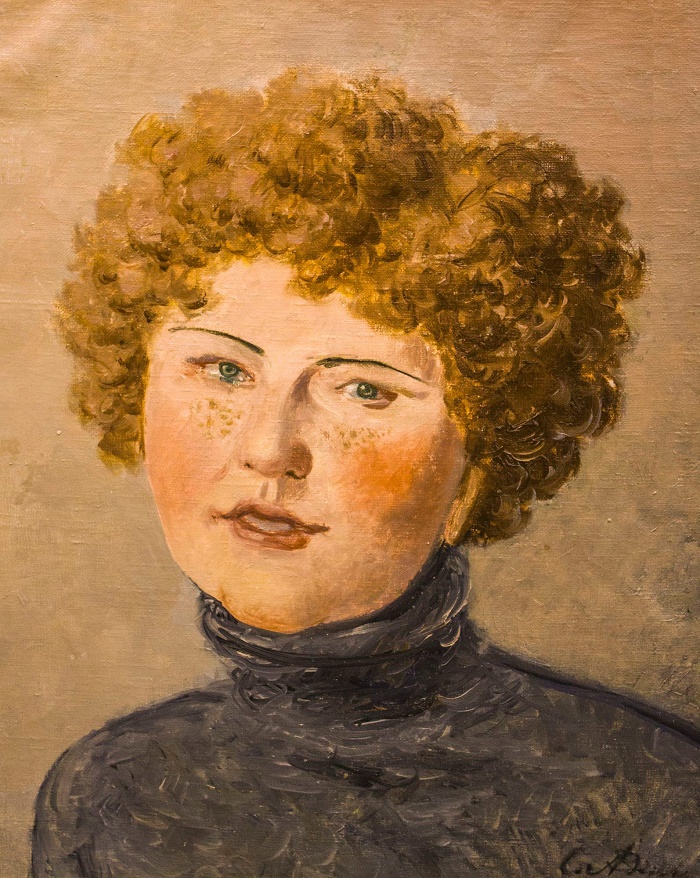
Girl with freckles. 1932
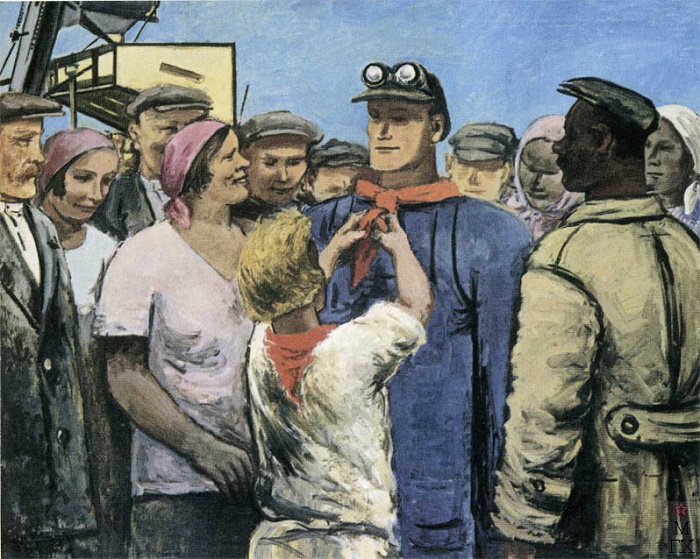
Heroes visiting us. Greeting shock worker. 1931

Illustration
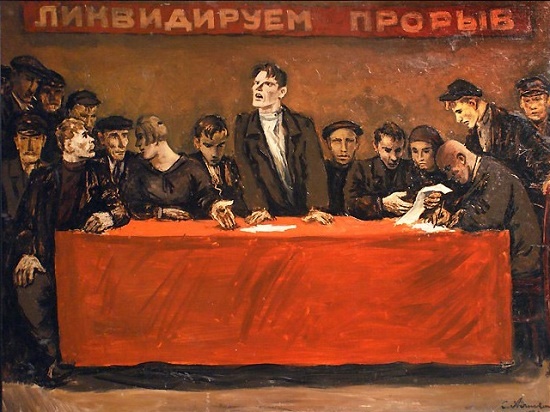
In the collective farm headquarters before the storming of the breakthrough. 1931

In the Moscow Metro. 1945

Interesting book. 1948

Laughing woman’s portrait. 1967
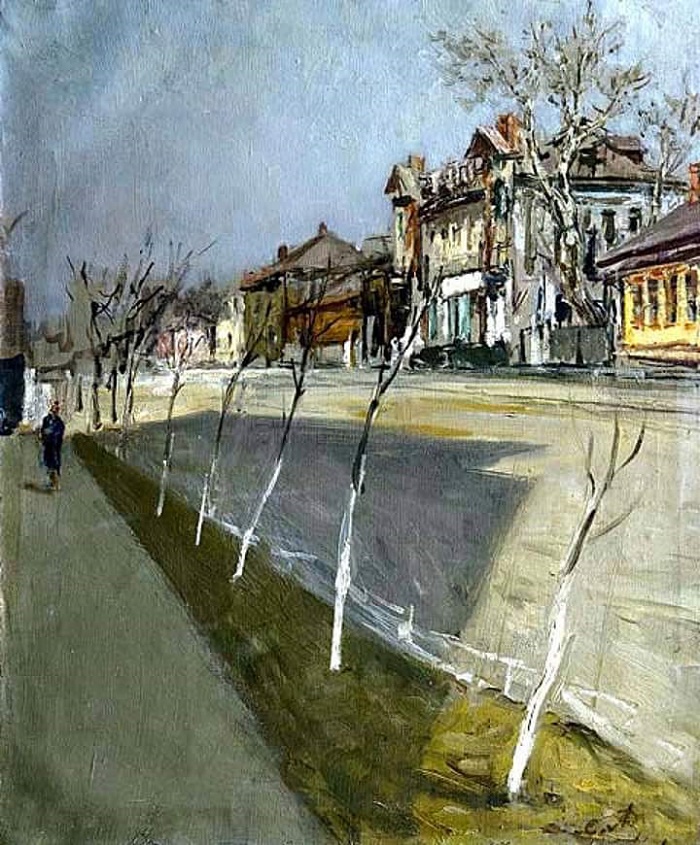
Spring on Maslovka. 1937

Meeting. 1937-1941

Misha. 1933. Samara art museum

Moscow sketch. 1930

On the Kuban

Pioneer girl (artist’s daughter). 1933
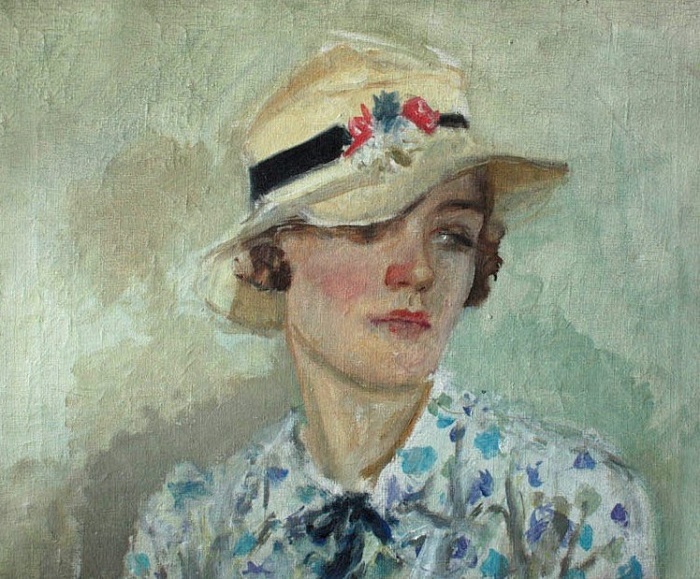
Portrait of N.K. Pimenova. 1936

Rusakovsky tram park. 1928

Sails (Portrait AB). 1918

Soviet artist Samuil Yakovlevich Adlivankin

Still life with flowers and fruit

Students to the Virgin Lands

The builder of Uralmash. 1932

The first Stalinist route. 1936

The pilot. Portrait of Katya Melnikova. 1934
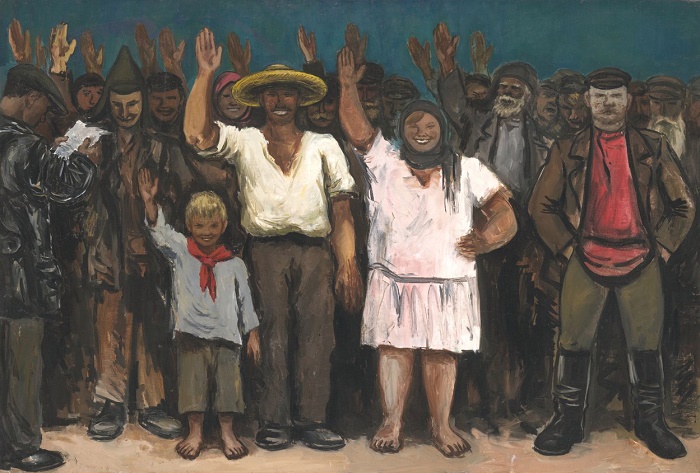
They vote for the exception of the kulak from the collective farm. 1931

Winter competitions on motorcycles. 1930s

Woman’s portrait

Young Atheists. 1930
Sources:
The album “The art alliance “OST”, Moscow, late 20s-early 30s”,
Soviet art magazines

